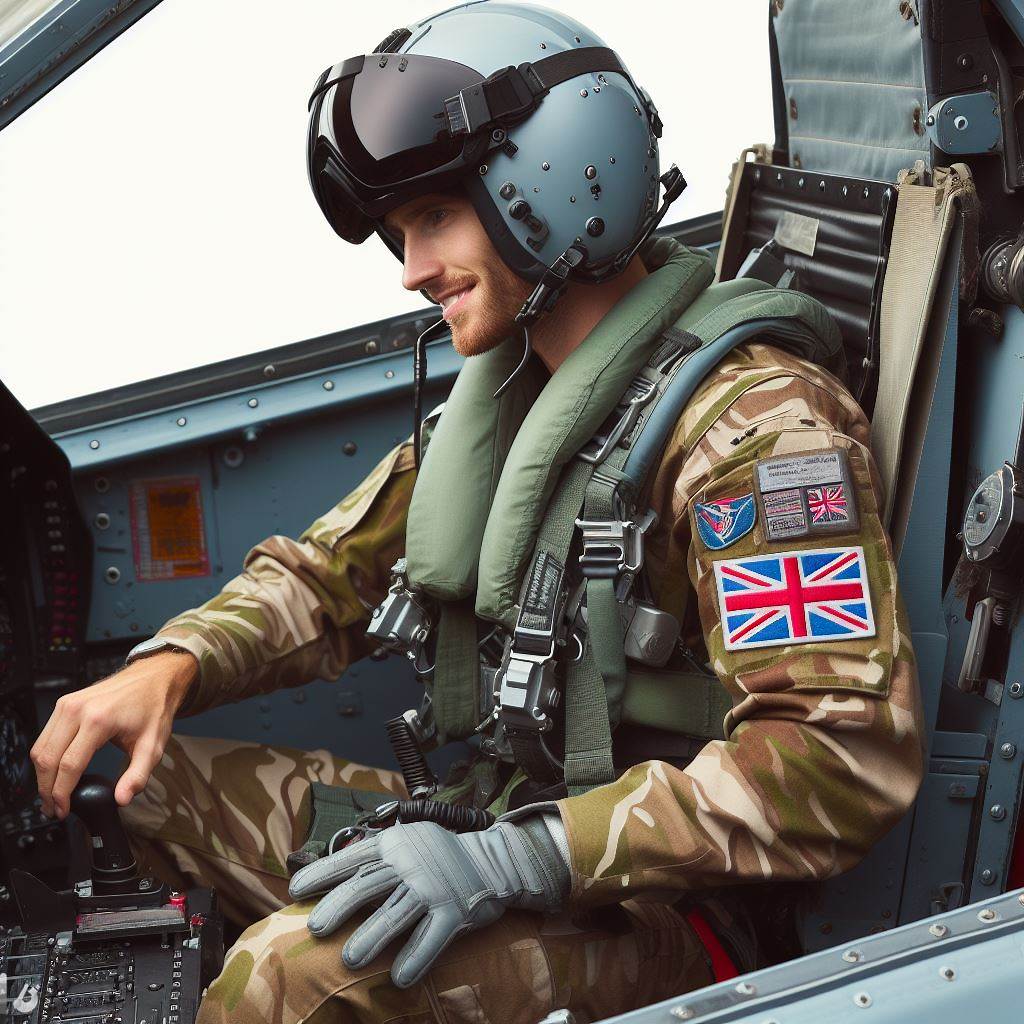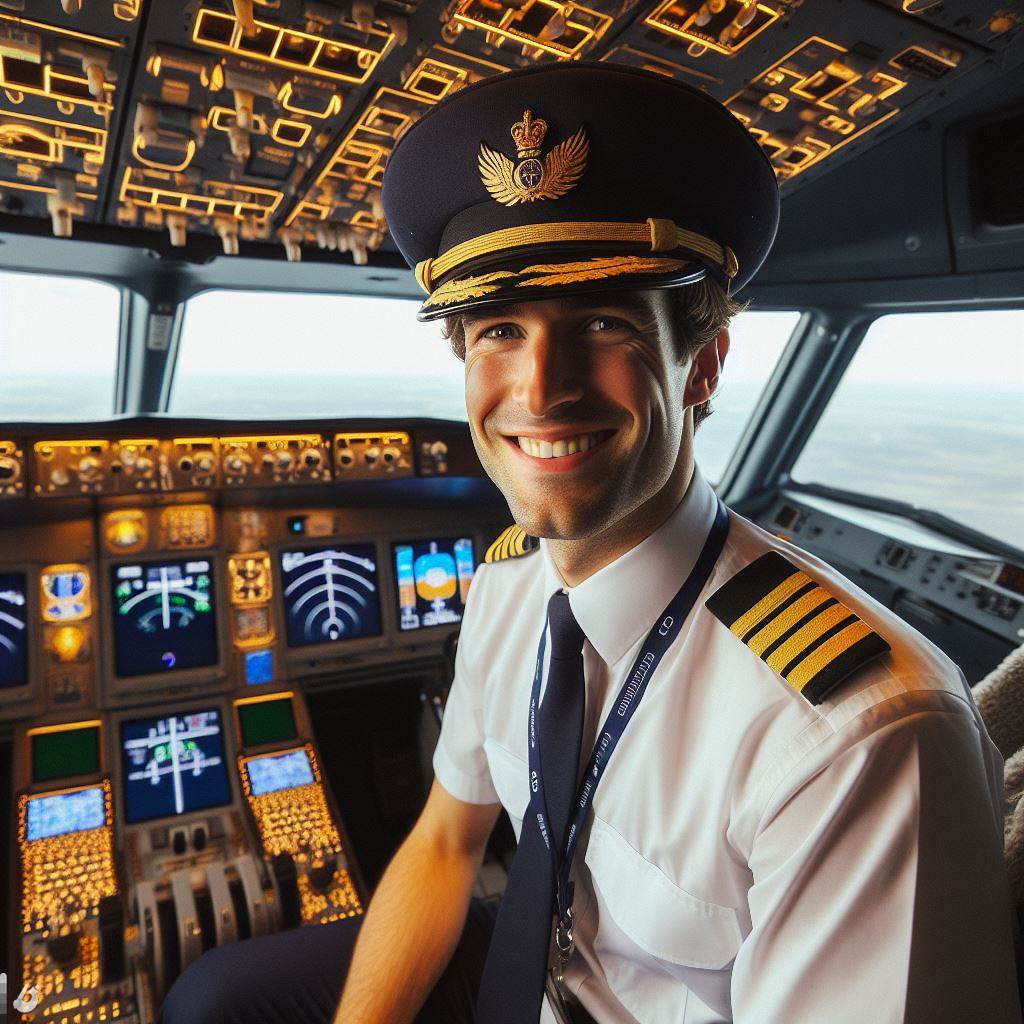Introduction
Pilot training in the UK is crucial for producing skilled and competent pilots. Technology is revolutionizing various fields, including pilot training.
This blog section will delve into the role of technology in UK pilot training.
The evolution of technology has impacted every aspect of our lives, including the aviation industry.
In today’s digital era, technology has become integral to pilot training, enhancing safety and efficiency.
One of the primary benefits of technology in pilot training is the use of flight simulators.
These advanced simulators provide a realistic training environment, allowing pilots to practice various scenarios without risking their lives or expensive aircraft.
Another crucial area where technology plays a vital role is in the integration of electronic flight bags (EFBs).
EFBs replace traditional charts and manuals, providing pilots with up-to-date information and reducing the risk of human error.
Furthermore, the introduction of electronic flight instruments, such as the glass cockpit, has revolutionized pilot training.
These advanced instruments provide a more intuitive and comprehensive display of vital flight data, improving situational awareness.
Additionally, technology has enabled the use of online platforms and tools for remote training.
Virtual classrooms, interactive modules, and online exams have made pilot training more accessible and flexible.
In short, technology has become an essential component of pilot training in the UK.
Flight simulators, electronic flight bags, advanced instruments, and online platforms have greatly enhanced the training process, ensuring that pilots are well-prepared for the challenges they may face in the air.
As technology continues to advance, the role it plays in pilot training will only become more significant.
Personalized UK Career Consulting
Receive tailored career guidance designed just for you. Get actionable steps and expert support to boost your career in 1-3 days. Take control of your career now.
Get StartedTechnology in Flight Simulators
The significance of flight simulators in pilot training
In recent years, technology has played a significant role in revolutionizing pilot training in the UK.
One aspect that has greatly benefited from technological advancements is the use of flight simulators.
These simulators have proved to be extremely valuable in preparing pilots for real-life scenarios and improving their skills.
How technology has improved flight simulators over the years
Flight simulators provide pilots with a safe and controlled environment where they can practice flying without any risk to themselves or others.
This is particularly important during the initial stages of training when beginners need to develop their basic flying skills.
Simulators allow them to familiarize themselves with the controls and the feeling of being in the cockpit.
The realistic experience provided by advanced simulators
Over the years, technology has greatly improved flight simulators, making them more realistic and effective in pilot training.
The graphics and visuals of these simulators have become incredibly detailed, providing a high level of realism.
This allows pilots to have a near-real experience of flying an actual aircraft, with accurate representations of airports, landscapes, and weather conditions.
The level of immersion provided by these simulators is impressive, giving pilots a sense of what they will encounter in their real flights.
Specific technologies used in flight simulators, such as motion controls and virtual reality
Motion controls
One of the key technologies used in flight simulators is motion controls.
These controls replicate the movements and vibrations experienced during actual flights, making the simulation feel more authentic.
Pilots can feel the forces acting on the aircraft, such as turbulence or G-forces, enhancing the overall training experience.
Virtual reality
Another technology that has contributed to the advancement of flight simulators is virtual reality (VR).
Your Dream Job Starts with a Perfect CV
Get a tailored CV and cover letter that captures your unique strengths and stands out in your industry. Let us help you make an unforgettable first impression.
Get StartedVR headsets enable pilots to be fully immersed in a virtual environment, enhancing their spatial awareness and situational perception.
This technology allows pilots to interact with their surroundings and practice critical skills, such as emergency procedures and navigation, in a realistic manner.
VR-based simulators make training more engaging and interactive.
Moreover, flight simulators equipped with advanced technology can provide pilots with a wide range of simulated scenarios.
These scenarios can include various challenging conditions, such as adverse weather, engine failures, or even emergencies.
Pilots can practice their reactions and decision-making skills in a safe environment, building their confidence and competence.
Flight simulators also enable pilots to practice and improve their communication and teamwork skills.
They can simulate scenarios where pilots need to interact with air traffic controllers or work together with other crew members.
This helps in preparing pilots for real-life situations where effective communication and coordination are crucial.
In short, technology has revolutionized pilot training in the UK through the use of advanced flight simulators.
These simulators provide a realistic experience, allowing pilots to develop their skills and gain confidence in a safe environment.
Technologies like motion controls and virtual reality enhance the simulation, making it more immersive and engaging.
Flight simulators are an indispensable tool in modern pilot training, contributing to the overall safety and competency of pilots.
Read: A Day in the Life of a UK Train Operator
Optimize Your LinkedIn for Success
Boost your LinkedIn profile with a professional bio, keyword-rich headline, and strategic recommendations that attract recruiters. Stand out from the crowd and get noticed.
Optimize NowData Analysis and Monitoring Systems
The use of data analysis in pilot training
Data analysis plays a crucial role in pilot training as it helps identify patterns, trends, and potential issues that enhance safety and performance evaluations.
How technology helps analyze flight data for safety and performance evaluations
Technology has revolutionized the way flight data is analyzed, providing pilots and training personnel with valuable insights.
With the help of advanced software and digital tools, the data extracted from various flight parameters is processed and analyzed, allowing trainers to evaluate pilot performance accurately.
One of the key benefits of technology in data analysis is the ability to identify safety concerns.
Flight data analysis helps in detecting anomalies or deviations from normal flight patterns, highlighting potential safety risks.
Monitoring systems used in aircraft to gather real-time data
Pilot training programs can now rely on technology to monitor flight data continuously, in real time.
Monitoring systems installed in aircraft play a crucial role in providing accurate and up-to-date information.
These systems gather a wide range of real-time data, such as altitude, airspeed, engine performance, and navigation parameters.
This data is then analyzed to evaluate the overall flight performance and assess pilot competency.
Thanks to advanced technology, data analysis is not limited to post-flight evaluation.
Real-time monitoring systems provide instant feedback, allowing instant adjustments and corrections during flight training.
In addition to ensuring safety, monitoring systems also help improve pilot training by tracking various performance metrics throughout the training process.
By monitoring the pilot’s actions and responses, trainers can provide targeted feedback and identify areas for improvement.
This personalized approach enhances the effectiveness of pilot training programs.
The role of technology in identifying potential issues and improving pilot training
Moreover, technology plays a vital role in identifying potential issues and enhancing pilot training.
Data analysis allows trainers to identify recurring patterns in pilot errors and address them systematically.
For example, if a certain type of maneuver consistently leads to errors, trainers can modify the training program accordingly, focusing more on that specific skill to improve pilot proficiency.
By leveraging technology, trainers can also use historical flight data to create realistic simulations that mimic real-life scenarios.
This enables pilots to experience various challenging situations and develop their problem-solving skills.
In fact, data analysis and monitoring systems powered by technology have transformed pilot training by providing accurate and real-time insights into safety and performance evaluations.
These systems allow for continuous monitoring, personalized feedback, and the identification of potential issues, ultimately enhancing pilot training programs and overall flight safety.
Read: Women in Air Traffic Control: UK Perspectives
Communication and Navigation Systems
The importance of communication systems in pilot training
Communication systems play a crucial role in pilot training as they ensure effective and timely information exchange.
How technology has enhanced communication between pilots and air traffic control
Technology has significantly enhanced communication between pilots and air traffic control.
Real-time data transmission allows for better coordination and increased safety during flights.
The advancements in navigation systems
Advancements in navigation systems, such as GPS and electronic charts, have revolutionized pilot training.
These allow for more accurate and reliable navigation, reducing the risk of errors.
GPS
The use of GPS has enabled pilots to determine their precise location, leading to improved situational awareness and better decision-making.
Electronic charts
Electronic charts provide pilots with up-to-date information on airspaces, weather conditions, and other relevant data, aiding in route planning and navigation.
How these technologies improve pilot training by enhancing situational awareness
These technological advancements have greatly improved pilot training by enhancing situational awareness.
Pilots can now access vital information at their fingertips, allowing them to make informed decisions in real-time.
The integration of communication and navigation systems in pilot training ensures seamless coordination between pilots and air traffic control.
The constant communication and exchange of information help prevent accidents and maintain efficient air traffic flow.
Additionally, these systems allow for effective communication with ground crews, facilitating smooth operations during takeoff, landing, and emergencies.
The adoption of technology in pilot training has also led to significant time and cost savings.
Pilots can now access information electronically, reducing the need for manual paperwork and physical charts.
Furthermore, the use of electronic communication and navigation systems minimizes the risk of miscommunication and human errors.
In emergency situations, the ability to quickly communicate accurate information can be lifesaving.
Technology has enabled pilots to transmit distress signals and request assistance efficiently.
The improvement of communication and navigation systems has also paved the way for future advancements in pilot training.
With the introduction of new technologies such as satellite-based communication and navigation systems, pilot training will become even more efficient and secure.
Satellite-based systems offer global coverage and improved reliability, ensuring seamless communication and navigation across different regions.
Moreover, these systems can provide real-time weather updates, enabling pilots to make informed decisions and avoid adverse weather conditions.
In essence, communication and navigation systems are integral to pilot training.
Technology has enhanced communication between pilots and air traffic control, improving coordination and safety.
Advancements in navigation systems have made pilots more aware of their surroundings, leading to better decision-making and safer flights.
By utilizing these technologies, pilot training has become more efficient, cost-effective, and secure.
Future innovations, such as satellite-based systems, will continue to enhance pilot training, ensuring that it remains at the forefront of safety and efficiency in the aviation industry.
Read: Salary Insights: UK Air Traffic Controllers

Aircraft Maintenance and Training Software
The role of technology in aircraft maintenance and training
Technology plays a crucial role in the field of aircraft maintenance and training.
It has revolutionized the way maintenance tasks are tracked, scheduled, and diagnosed.
Additionally, technology has greatly facilitated efficient training and knowledge transfer within the pilot training realm.
Software used for maintenance tracking, scheduling, and diagnostics
One of the key aspects of technology in aircraft maintenance is the software used for maintenance tracking, scheduling, and diagnostics.
These software solutions enable airlines and maintenance organizations to keep track of every maintenance task performed on each aircraft.
They also help in scheduling routine maintenance activities, ensuring that all necessary checks and repairs are carried out in a timely manner.
With the help of these software solutions, maintenance personnel can easily access historical records of maintenance tasks, which aids in identifying patterns or recurrent issues.
This data-driven approach enables proactive maintenance, reducing the risk of unexpected failures and improving overall safety.
Furthermore, aircraft maintenance software also comes equipped with diagnostic capabilities.
It can detect and analyze various parameters and alerts maintenance personnel if any abnormality is detected.
This proactive approach allows for timely corrective action and reduces the chances of in-flight issues or component failures.
How technology facilitates efficient training and knowledge transfer
In the realm of pilot training, technology has also played a significant role.
It has made training more efficient and effective by providing tools for scenario-based training programs.
These programs simulate real-world situations, allowing pilots to practice and develop their skills in a safe and controlled environment.
Specific software used in pilot training, such as scenario-based training programs
One example of software used in pilot training is Flight Simulators.
These advanced systems replicate the control panel, instruments, and flight dynamics of different aircraft types.
Pilots can practice a wide range of scenarios, including normal and emergency procedures, without the need for an actual aircraft.
Another software used for pilot training is Computer-Based Training (CBT) modules.
These modules provide interactive learning materials that cover various theoretical aspects of aviation.
Pilots can access these modules at their own pace, allowing for flexible learning and continuous knowledge transfer.
Moreover, technology has also facilitated the integration of Virtual Reality (VR) and Augmented Reality (AR) in pilot training.
VR and AR technologies provide immersive and interactive training experiences, allowing pilots to visualize complex systems or procedures in a more realistic manner.
In general, technology has significantly transformed the aircraft maintenance and pilot training sectors.
The software used for maintenance tracking, scheduling, and diagnostics has streamlined maintenance operations, leading to improved safety and reduced downtime.
Furthermore, scenario-based training programs and other software tools have enhanced pilot training by providing realistic and immersive learning experiences.
As technology continues to advance, the role of technology in UK pilot training is expected to further evolve, ensuring safer and more efficient aviation operations.
Read: Navigating UK Airspace: ATC Challenges
Remote Learning and E-Learning Platforms
Technology has revolutionized pilot training by introducing remote learning and e-learning platforms.
These platforms have had a profound impact on the way aspiring pilots acquire knowledge and skills.
Let’s explore the various ways technology has transformed pilot training.
Impact of Technology on Remote Learning and E-Learning in Pilot Training
Remote learning and e-learning platforms have significantly enhanced pilot training programs.
These technologies allow aspiring pilots to access training materials and resources anytime and anywhere.
Here are some notable impacts:
Flexibility and Accessibility
Online courses and modules have provided pilots with the flexibility to learn at their own pace.
Pilots can access study materials and complete assignments from the comfort of their homes.
This flexibility is particularly beneficial for those with busy schedules.
Virtual Classrooms and Interactive Learning Materials
Technological advancements have enabled the creation of virtual classrooms and interactive learning materials.
Pilots can participate in live online sessions where they can interact with instructors and fellow students.
These virtual classrooms simulate real-life training scenarios, enhancing the learning experience.
Engaging and Interactive Learning
E-learning platforms utilize various multimedia tools such as videos, simulations, and animations.
These interactive learning materials make the training more engaging and effective.
Pilots can visualize complex concepts, practice procedures, and receive instant feedback, improving their understanding and retention of knowledge.
Collaborative Learning
Remote learning platforms facilitate collaboration among pilots from different locations.
Pilots can connect with each other through online forums, discussion boards, and group projects.
This collaborative learning approach allows them to share insights, experiences, and best practices, further enriching their training.
Technological Platforms for Exam Preparation and Remote Assessments
Technology has also transformed exam preparation and assessments in pilot training.
Online platforms provide pilots with practice tests and quizzes to evaluate their knowledge and progress.
Remote assessments, such as online exams and simulations, help pilots demonstrate their skills effectively.
The combination of remote learning and e-learning platforms has revolutionized pilot training by making it more accessible, engaging, and flexible.
Pilots can adapt their training to fit their individual needs and preferences, ultimately enhancing their overall learning experience.
Furthermore, these technological advancements have also extended benefits to flight instructors and training centers.
Instructors can leverage online platforms to deliver comprehensive training materials and customize the learning experience for each pilot.
Training centers can reach a broader audience and reduce costs associated with traditional classroom-based training.
In a nutshell, technology has played a vital role in transforming pilot training through remote learning and e-learning platforms.
These platforms have dramatically enhanced flexibility, accessibility, engagement, collaboration, and assessment methods.
As technology continues to evolve, we can anticipate further advancements that will revolutionize the aviation industry and produce highly skilled and competent pilots.
Conclusion
This blog post has highlighted the crucial role of technology in UK pilot training.
We have discussed how advancements in technology have revolutionized the training process, from flight simulators to virtual reality.
It is clear that technology has made pilot training more efficient, effective, and safe.
Furthermore, we have emphasized the importance of continued advancements in technology for future pilots.
As technology continues to evolve, it will provide even more sophisticated and realistic training methods, enhancing the skills and capabilities of pilots.
It is essential for aspiring pilots to embrace and adapt to these technological advancements.
Moreover, this blog post encourages readers to explore how technology is shaping other professions in the UK.
The aviation industry is just one example of how technology is revolutionizing training and work processes.
By exploring other industries, readers can gain insight into the transformative power of technology and how it is shaping the future of various occupations.
Technology plays a significant role in UK pilot training, and its importance cannot be overstated.
It not only enhances training methods but also improves the overall safety and skill level of pilots.
As technology continues to advance, there are bound to be even more exciting developments in the field of pilot training.
It is an exciting time for aspiring pilots and the aviation industry as a whole.




